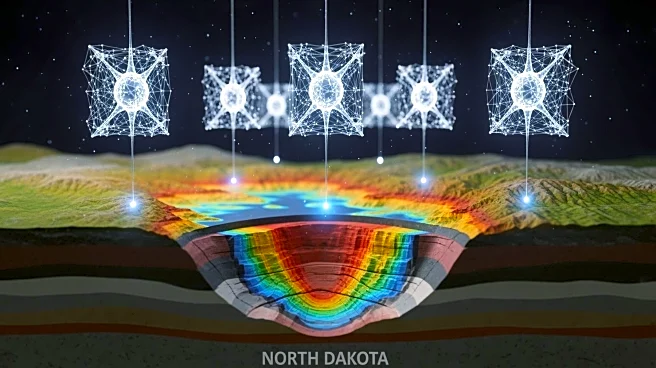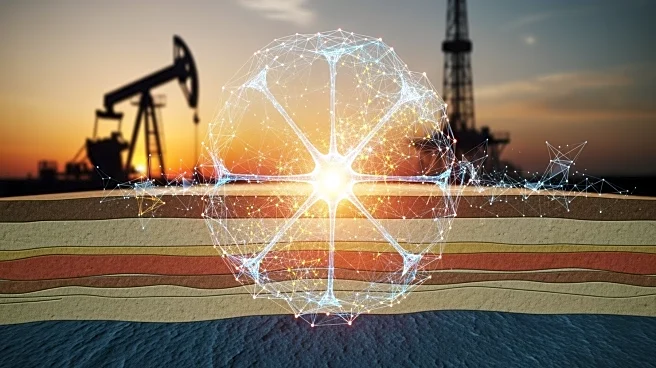What's Happening?
Recent advancements in deep learning and self-supervised methods have significantly improved the characterization of earth subsurface formations, particularly in the Bakken formation at Williston Basin,
North Dakota. Researchers have utilized a pre-trained deep learning model to identify formation types, such as Lodgepole, Upper Bakken Shale, Middle Bakken, Lower Bakken Shale Member, Upper Three Forks, and Lower Three Forks. These formations are crucial components of the petroleum system, providing necessary burial and thermal maturation for hydrocarbon generation. The study involved log harmonization and the use of labeled wells to train the model, which demonstrated superior performance in identifying formation types compared to traditional methods.
Why It's Important?
The application of deep learning in subsurface characterization holds significant implications for the petroleum industry. By improving the accuracy and speed of identifying formation types, companies can optimize exploration and production processes, potentially reducing costs and increasing efficiency. This technological advancement may lead to more effective resource management and enhanced oil recovery strategies. Additionally, the ability to accurately characterize subsurface formations can aid in environmental assessments and regulatory compliance, ensuring sustainable practices in resource extraction.
What's Next?
The success of this deep learning model in North Dakota suggests potential for broader application in other regions and geological settings. Future research may focus on refining the model to handle diverse subsurface conditions and expanding its use to international fields, such as those in the Netherlands and Canada. Continued collaboration between geologists and data scientists could further enhance the model's capabilities, leading to more comprehensive subsurface mapping and improved resource management strategies.
Beyond the Headlines
The integration of machine learning in geological studies raises ethical considerations regarding data privacy and the potential displacement of traditional geological roles. As technology continues to evolve, the industry must address these concerns and ensure that advancements benefit all stakeholders, including local communities and environmental groups. The long-term impact of such technologies may also influence educational curricula, emphasizing the importance of interdisciplinary skills in future geologists.














